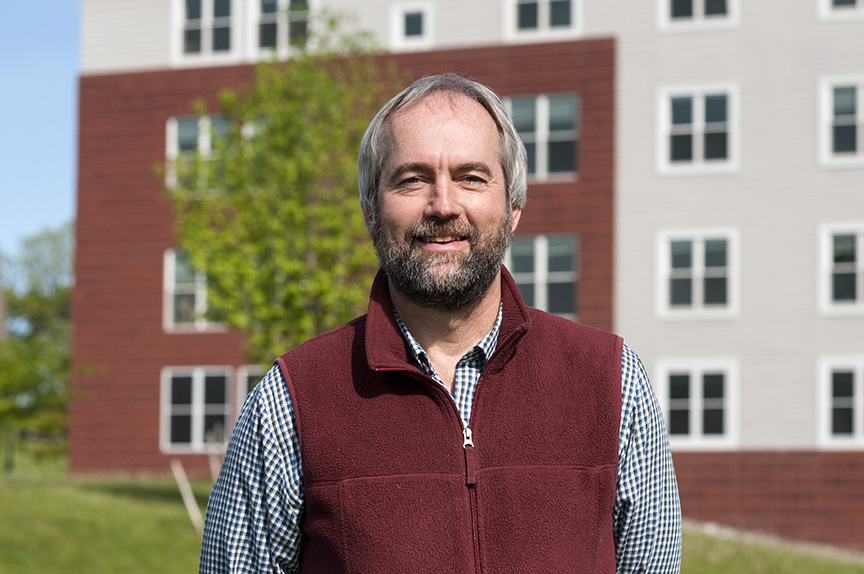Nurturing a community’s sense of place is at the heart of Walter Poleman’s work.
That community can be a town, city, or even a dorm on campus. For Poleman, an ecologist and senior lecturer at UVM, it’s the GreenHouse Residential Learning Community at UVM, where he serves as faculty director. It’s also his work as director of the PLACE (Place-based Landscape Analysis & Community Engagement) Program with the Burlington Geographic Initiative.
Burlington Geographic is a collaborative initiative of UVM and Shelburne Farms, which creates opportunities for fostering a sense of place and a sustainable future for the City of Burlington. Burlington Geographic brings together community members, educators, students, city departments, businesses, and non-profit organizations to explore the natural and cultural history of Vermont’s largest city.
“One of the goals is to blur boundaries between the city and the University. We want to rely on mentors in Burlington, use the city as our classroom, and help serve the community,” Poleman says. “The most forward-looking piece of Burlington Geographic is examining the health of the city—from the health of the aquatic ecosystem in Burlington Harbor to the quality of the drinking water to access to health care.
By giving voice to diverse stories, showcasing partnerships and sustainability initiatives, connecting educators with local experts, and infusing energy and ideas, Burlington Geographic aims to engage the entire community to celebrate the community’s past, future, and place.
Early Influences and Building Community
Poleman grew up in East Africa, where his father taught agricultural economics. “That had a huge influence on my life,” he says. “It was a very formative time when I was living in Uganda as a child. I fell in love with geography, place, and the connection between people and wildlife.”
He came to UVM to study in the Field Naturalist Program, earning both his master’s and PhD here. Ten years ago, the GreenHouse Residential Learning Community was established and Poleman became director. The community began as an outgrowth of UVM’s Living and Learning programs and evolved from there.
GreenHouse is specifically designed to promote ecological literacy, instill a strong sense of place, and foster a holistic appreciation for human and natural environments. The program provides students with opportunities to live in an ecologically-minded community with an active and supportive learning atmosphere.
“We recognized the value of learning communities instead of un-programmed dorms. At GreenHouse, we have a real distillation of first-year and second-year students with all different majors,” Poleman says. “This is a place where students can live in an intentional community and find a connection to Burlington and a skills-based education. It’s a place where you can grow your own vegetables, cook your own food, learn woodworking or build longboards and canoes.”
How can programs like GreenHouse and Burlington Geographic help students secure a community’s sense of place for future generations? Poleman suggests that students develop hands-on skills, invest in relationships, and embrace both complexity and ambiguity.
-Our “UVM Is” series celebrates University faculty, educators, and the campus community.
To learn more, visit UVM Continuing and Distance Education at learn.uvm.edu.




